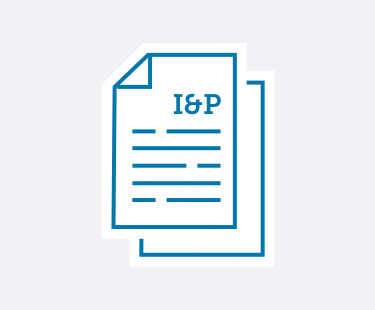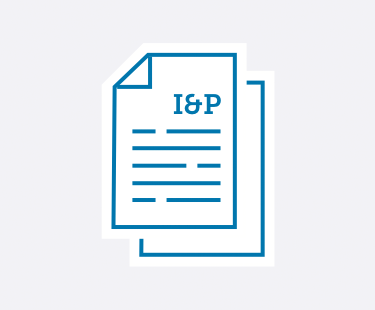

Learn practical strategies to handle emerging trends and leadership challenges in private schools.
No matter if you’re a School Head, Admission Director, Development Director, Board member, or any other private school administrator—Ideas & Perspectives, ISM’s premier private school publication, has strategic solutions for the pervasive problems you face.
- Tuition not keeping pace with your expenses? In I&P, explore how to use strategic financial planning to create your budget and appropriately adjust your tuition.
- Enrollment dropping off? Discover how to implement the right admission and enrollment management strategies that engage your community—and fill your classrooms.
- Trouble retaining teachers? Learn how you can best support your teachers using ISM’s Comprehensive Faculty Development framework. Your faculty members will become more enthusiastic about their roles—which ultimately improves student outcomes.
- Fundraising campaigns not as successful as you’d hoped? Implement ISM’s practical advice and guidance to build a thriving annual fund, construct an effective capital campaign, and secure major donors—no matter your community size or location.
- Not sure how to provide professional development—for you and your staff? Learn ways to develop and fund a successful professional development strategy. You can improve teacher-centered satisfaction and growth, which in turn strengthens student-centered learning.
- Problematic schedule? You can master the challenges of scheduling with the help of ISM’s practical advice, based on our experience with hundreds of schools and our time-tested theories.
- And so much more.
I&P has shared targeted research, up-to-date insight, and sound theory with school leaders since 1975. More than 8,500 private school decision-makers find the answers to their schools’ administrative and governance matters in our advisory letter. We give you the strategic answers you need.
As an ISM Silver or Gold member, you not only receive issues online and in print 10 times a year, but you have access to more than 600 articles in our web archive. Need help? It’s at your fingertips! Learn more and sign up for ISM's membership here.
Search
See the articles from our latest issue of Ideas & Perspectives.
The Administrative Culture Profile
Volume 30 No. 1 // January 17, 2005
ISM’s study of School Head leadership has, by the nature of its findings, implied the creation of an instrument comparable to the Faculty Culture Profile for use at the administrative level. This instrument, the Administrative Culture Profile, is designed for use with academic administrators: i.e., administrators who oversee instructional programs directly or indirectly, including the School Head. It may be used in the following ways.
1. Already a member? Click here to login.
2. Not a member? Click here to become a member.
3. Not sure? We'll help you figure it out.
The Symptoms of a Toxic Schedule—And the Remedy
Volume 30 No. 1 // January 17, 2005
The schedule is expected to provide an environment in which students can gain access to the rich program your school offers. As School Head, you may notice that the schedule serves student interests less and less well as the program becomes more complex. Both students and faculty become more harried.
1. Already a member? Click here to login.
2. Not a member? Click here to become a member.
3. Not sure? We'll help you figure it out.
Advisory Programs:What Does the Future Hold?
Volume 29 No. 16 // December 22, 2004
The most distinctive difference between students’ educational experiences in most private-independent schools and those of students in their strongest public school competitors is the level of personalized attention they receive—attention guided by the multiple human values embodied in school mission. In lower schools, this kind of attention is fostered by relatively low student-to-teacher ratios, often in self-contained classrooms. In middle and upper divisions, the advisory program is the primary “delivery system.” The most significant, programmatic difference-maker in serving private-independent schools’ strategic interests—in both fulfillment of mission and development of competitive advantage—is the vigor, authenticity, and professionalism of their advisory programs.
1. Already a member? Click here to login.
2. Not a member? Click here to become a member.
3. Not sure? We'll help you figure it out.
15 Administrative Actions and Approaches Compatible With the Findings of ISM’s Head Leadership Study
Volume 29 No. 16 // December 22, 2004
In a previously published I&P article, "ISM Research Report: 16 Characteristics of Head Leadership," ISM reported the results and implications of its fall 2004 leadership study. Those findings were arrayed in two eight-item lists (see Tables 1 and 2). The following 15-item list provides a sampling of the kinds of actions and approaches you, as School Head, might take to move forward with implementation of those findings.
1. Already a member? Click here to login.
2. Not a member? Click here to become a member.
3. Not sure? We'll help you figure it out.
The Head’s Role in Developing Leadership
Volume 29 No. 15 // November 26, 2004
ISM continues to identify the tasks of the School Head as becoming more complex and demanding. But what are the specifics and the implications? Consider Figure 1, which shows the different areas where the Head is expected to have both expertise and increasing involvement.
1. Already a member? Click here to login.
2. Not a member? Click here to become a member.
3. Not sure? We'll help you figure it out.
Peer-to-Peer Programs: Balancing Student ‘Ownership’ With Management Responsibilities
Volume 29 No. 15 // November 26, 2004
Private-independent schools, particularly in middle and upper schools, have found creative ways to harness students’ positive peer influence through formalized peer-helping-peer programs. Programs such as peer mediation, AIDS awareness, antibias, and tobacco product education/smoking prevention can create win-win opportunities for both peer helpers and the recipients, and provide leadership roles to which students eagerly aspire.
1. Already a member? Click here to login.
2. Not a member? Click here to become a member.
3. Not sure? We'll help you figure it out.
ISM Research Report: 16 Characteristics of Head Leadership
Volume 29 No. 14 // November 6, 2004
The topic of organizational leadership proved to be a magnet for researchers and management theorists throughout the 20th century, and interest in the subject has continued to build in the 21st. In your role as School Head, you may have found yourself confused, overwhelmed, or both in the face of the sheer volume of ideas and concepts regarding leadership, not all of them compatible.
1. Already a member? Click here to login.
2. Not a member? Click here to become a member.
3. Not sure? We'll help you figure it out.
Keep Evolving Program Needs on Your Facilities 'Radar'
Volume 29 No. 13 // October 15, 2004
Keeping mission squarely in mind, what programs and services will private-independent schools need to offer in the next 10 years to remain competitive? How do they influence the planning and design of new—or adaptation of existing—school buildings? As Board President, remind your committees to consider facility essentials 7-10 years ahead of need.
1. Already a member? Click here to login.
2. Not a member? Click here to become a member.
3. Not sure? We'll help you figure it out.
Assessing the Performance of the Committee on Trustees
Volume 29 No. 13 // October 15, 2004
While it is the Committee on Trustees’ job to profile and cultivate new Board members, a caveat is that both the Development Committee and the Major Gifts Committee also have a direct interest in people who can drive the success of the strategic plan. These three committees must develop excellent communication to ensure that cultivation efforts are coordinated, thus avoiding duplication or, worse, an undermining of each other’s efforts.
1. Already a member? Click here to login.
2. Not a member? Click here to become a member.
3. Not sure? We'll help you figure it out.
Use Your Parent Education Plan to Shift Parents From a 'Contract Mentality' to a 'Sense of Community'
Volume 29 No. 13 // October 15, 2004
Private-independent schools continue to report increasing problems with demanding, challenging parents. Much recent literature deals with social and cultural phenomena that may account for these difficulties. ISM identified this growing problem over a decade ago, based upon feedback from our client schools. At that time, we encouraged schools to develop a comprehensive and proactive Parent Education Plan. Today, we are ever more convinced that a strong PEP is imperative for the success of private-independent schools—now and in the future.
1. Already a member? Click here to login.
2. Not a member? Click here to become a member.
3. Not sure? We'll help you figure it out.


